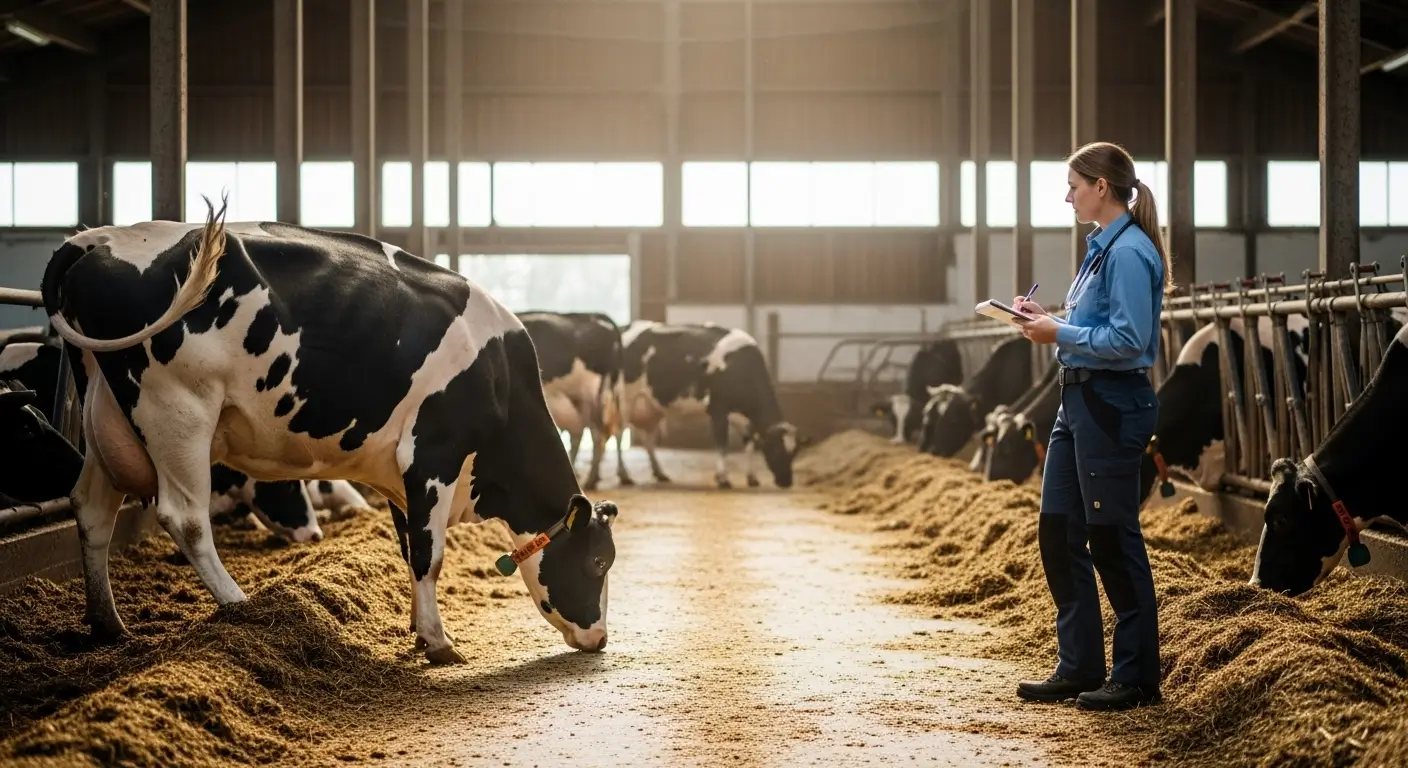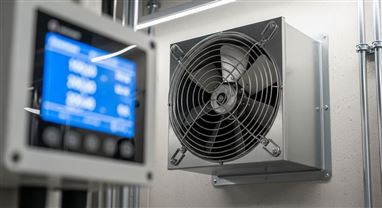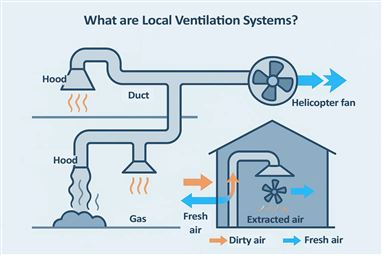The heat (estrus) period is a short time window when female animals become ready to mate, and during this process some physical and behavioral signs can be observed quite noticeably. Among the most prominent signs are swelling of the vulva and mucous discharge, restless behaviors, and increased interest in other animals. During this period, the animal enters its most suitable phase for insemination, and intervention at the right time directly affects pregnancy success.
During estrus, licking, tail raising, decreased feed intake, and increased activity are frequently seen in animals. Especially in species such as cows, goats, and sheep, the animal may mount other individuals or allow itself to be mounted. These behaviors facilitate breeding monitoring in farm management and ensure timely intervention.
Thanks to early detection of heat signs, both natural mating and artificial insemination processes can be carried out in a planned and efficient manner. Reading the signs correctly is critically important to avoid missing the most fertile period of the cycle. At the same time, factors such as the animal’s breed, age, and nutritional level may affect the intensity of these signs. Therefore, each animal should be observed individually and the signs should be analyzed accurately.
Most Common Physical Signs During the Heat Period
The most common physical signs during estrus manifest themselves through distinct changes in the animal’s body. These changes are directly recognizable, especially for experienced breeders. Redness and swelling in the genital area and clear mucous discharge are among the most notable signs. The animal’s general posture, movements, and resting habits also visibly differ during this period.
Commonly observed physical signs during estrus:
- Swelling and edema of the vulva
- Clear, slippery vaginal discharge
- Frequent tail raising
- Increased frequency of urination
- Slight rise in body temperature
- Increased licking of the genital area
- A tendency to remain standing instead of resting
These signs indicate that the animal is in the most suitable phase for mating. While observing, it should be kept in mind that the signs will begin within a few days and end in a short time. Therefore, regular checks and timing are of critical importance for a successful insemination process. Accurate observation also makes a significant difference in productivity.
How to Recognize Behavioral Signs of Heat?
The behavior of animals showing estrus differs from their routine and becomes more pronounced. Signs such as restlessness, frequent movement, and an inability to stay still are particularly noticeable. The animal tends to make more contact with other animals around it. This interaction usually becomes evident through mounting other animals or allowing itself to be mounted. These behaviors are among the clearest signals of heat.
Changes in feeding habits are also common. Animals in estrus may reduce feed intake and show increased interest in water. Constant vocalization—especially frequent bellowing in cows—is also common. The animal becomes more sensitive to the external environment and may give unusual reactions. During this period, restlessness may be observed in enclosed spaces, with a greater preference for open areas.
Behavioral signs can be easily noticed with regular observation. Checks made especially in the morning and evening are the most effective times to detect heat. To avoid missing this process, daily observation habits should be established and each animal should be monitored individually. Timely intervention increases insemination success and positively affects farm efficiency.
What Are the Signs of Heat in Cows?
In cows, heat signs appear with distinct indicators at both physical and behavioral levels. During this period, the cow becomes more active and reactive to its surroundings. Mounting other cows or allowing itself to be mounted is frequently observed. At the same time, the tail is often raised, vaginal discharge is seen, and a restless attitude is displayed. When these signs are correctly observed, the ideal time for insemination becomes clear.
The most common signs of heat in cows are as follows:
- Mounting other cows or allowing mounting
- Clear and slippery vaginal discharge
- Tail raising and frequent urination
- Restlessness and constant movement
- Loud vocalizations and frequent bellowing
- Decreased feed and water intake
- Frequent licking and cleaning of the genital area
The heat period in cows generally lasts 18 to 24 hours, and correct monitoring of this process significantly affects the success rate of artificial insemination. Therefore, daily observation is of great importance to detect signs early and intervene in time. When all these signs are analyzed correctly, advantages are gained in terms of both reproductive health and herd productivity.
How Does the Heat Process Develop in Sheep and Goats?
In sheep and goats, the heat process varies seasonally and becomes more evident mostly in the autumn months. During this period, females show more interest in males and display activity beyond normal. Physical signs may be mild, but behavioral changes can be noticed with careful observation. The heat duration ranges from 24–36 hours in sheep and from 24–48 hours in goats. Therefore, regular observations increase fertilization success.
Key signs observed during the heat process in sheep and goats:
- Increased interest in male animals
- Frequent tail wagging
- Mild swelling and discharge in the vaginal area
- Restlessness and constant activity
- Loud vocalizations and frequent bleating
- Mounting other animals or allowing mounting
- Reduced feed intake and distraction
When these signs are correctly identified, the timing of both natural mating and artificial insemination can be planned ideally. Sheep and goats show more pronounced signs especially in the early morning hours. Therefore, observations should be concentrated during this time frame, and processes should be recorded in a logbook for farm management. Thanks to this monitoring, fertility rates in the herd increase significantly.
How Long Does Estrus Last and When Does It Start?
The duration of heat varies by species but generally lasts between 12 and 48 hours. In cows, this duration is on average around 18 hours. It may vary between 24 and 36 hours in sheep and 24 to 48 hours in goats. Since the period is short, detecting the signs at the right time is quite important. The onset of heat also varies according to the animal’s age, season, and overall health status.
This period usually reveals itself with more pronounced signs in the early morning or in the cool of the evening. Observations should generally be made in the morning and evening, and the signs should be followed carefully. If the animal’s previous heat cycle is known, it becomes easier to predict the next process based on this data. Keeping records in herd management is therefore highly valuable.
With the onset of the heat period, both behavioral and physical changes begin to appear rapidly in animals. Restlessness, tail movements, and interest in other animals are early indicators that the process has begun. Insemination carried out with correct timing increases pregnancy success and directly affects farm efficiency. Therefore, both the start time and the duration of the process should be monitored carefully.
Why Is Heat Detection Important?
Heat detection is one of the most critical practices that directly affect productivity in livestock production. Accurately determining the most suitable time for female animals to mate increases the success rate in both natural mating and artificial insemination. If this period is missed, the chance of pregnancy decreases and the production cycle is disrupted. Timely detection prevents economic losses and increases reproductive performance.
Through daily observation, heat signs can be clearly identified. With checks made especially in the morning and evening, changes in the animal’s behavior and posture can be easily noticed. Keeping regular records during this process facilitates both individual and group monitoring. In particular, signs that might be overlooked in large herds can be more easily managed with record systems.
Heat detection also provides clues about the general health status of the herd. Animals that do not show heat consistently or that have irregular cycles should be monitored more closely for possible reproductive problems. This allows early intervention and healthier production planning. Effective monitoring supports not only insemination success but also the long-term sustainability of the enterprise directly.
The Contribution of Barn Ventilation Systems to Heat Detection
An effective ventilation system in barns has a direct effect on animal health and reproductive performance. Regular air circulation reduces the buildup of ammonia and humidity, preventing respiratory diseases. At the same time, balancing temperature and humidity lowers stress levels in animals during the heat period and allows behaviors to be observed more clearly. A good ventilation system both increases productivity and elevates animal welfare.
What Should Be Done in Animals with Weak Heat Signs?
In animals that show weak heat signs, the observation period and frequency should first be increased and a more detailed evaluation should be carried out. Some animals may go through a silent heat period, in which case physical or behavioral signs remain quite mild. Such situations are more common especially in high-yield dairy cows or animals with low overall condition. Therefore, cycle tracking of animals that do not show signs should be done carefully, and veterinary-supported hormone checks should be used if necessary.
Steps that can be taken for animals showing weak heat signs:
- Increase observation frequency (at least 3 times a day)
- Veterinary examination for the possibility of silent heat
- Reproductive system examination and assessment with ultrasound
- Regulate the cycle with hormone applications if deemed necessary
- Review nutrition and body condition score
- Keep detailed herd management records and perform regular analysis
If observation and intervention are delayed in these animals, the likelihood of fertilization decreases and reproductive performance is impaired. Especially in large-scale enterprises, such situations can lead to both economic losses and deviations in production planning. Therefore, animals with unclear heat signs should not be neglected, and the monitoring process should be supported by professional methods.











Leave a Comment